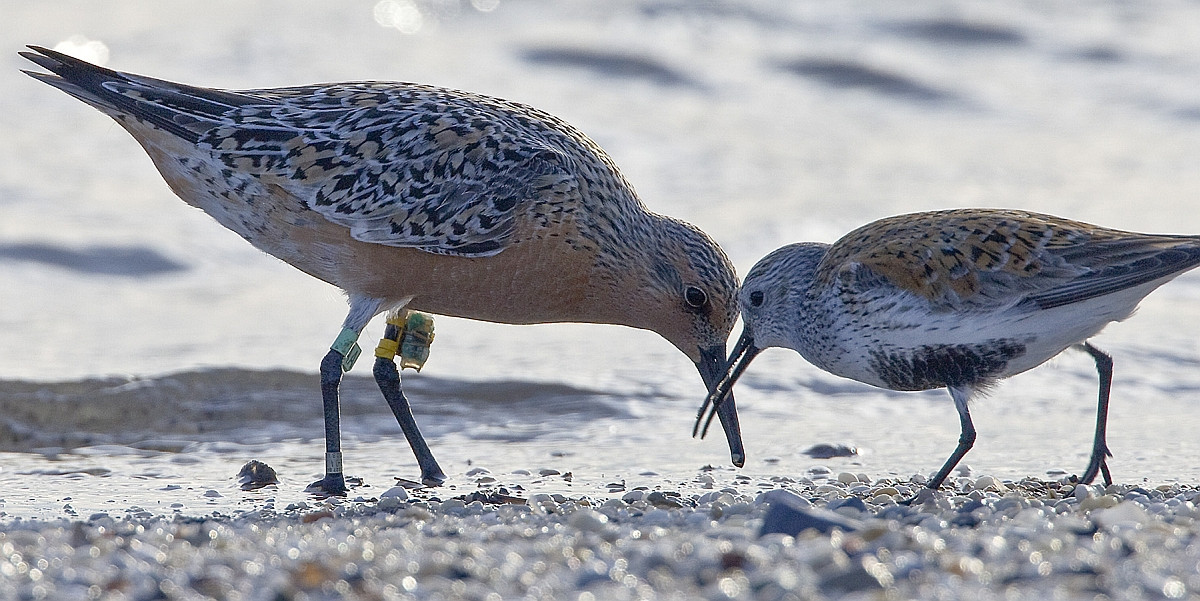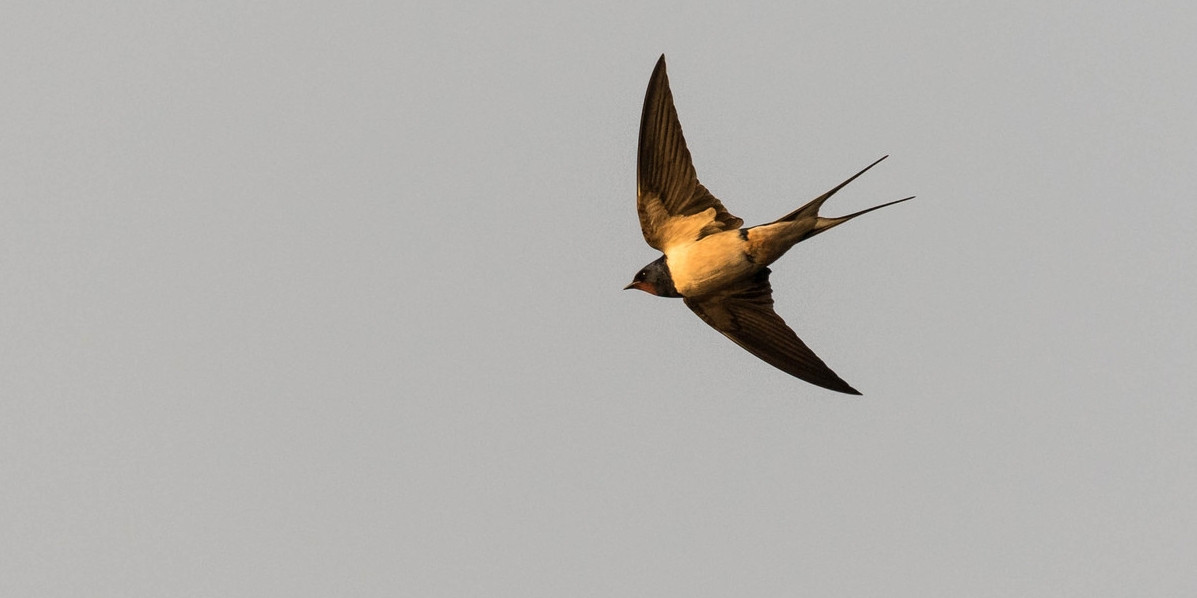NIOZ software opens new avenue for animal migration research
Other than present-day software, by using the speed of sunrise and sunset, FLightR explicitly takes into account that a bird moves. Through advanced statistical methods the estimations of time and place have become more accurate. The use of this software will greatly improve the quality of all geolocator studies. For the NIOZ bird research, it will accelerate the studies with geolocators on shorebirds such as sanderlings, knots and bar-tailed godwits.
Immediate application
Recently the North American subspecies of barn swallows, which normally breed in the northern hemisphere, started to also breed on their southern hemisphere wintering grounds in Argentina. Researchers were eager to find out what these birds did outside the breeding season: would they go to the northern hemisphere together with their North American conspecifics — and breed there, or would they stay on the new breeding grounds all year round?
Of all the novel techniques developed to track birds over long distances, for the tiny barn swallows only one option was available: the ultralight solar geolocators. Geolocators log light levels over time. To get the nonbreeding positions,an international team of researchers including Eldar Rakhimberdiev of NIOZ used FLightR. With FLightR Rakhimberdiev and colleagues were able to solve the enigma of the Argentina-breeding barn swallows: the birds completely adopted a migration strategy typical of South American birds, migrating north to the tropics and shifting their annual cycle by about 6 months
More information:
Eldar Rakhimberdiev, Anatoly Saveliev, Theunis Piersma & Julia Karagicheva, FLightR: An R package for reconstructing animal paths from solar geolocation loggers, Methods in Ecology and Evolution, early online http://dx.doi.org/10.1111/2041-210X.12765
Winkler, D.W., Gandoy, F.A., Areta, J.I., Iliff, M.J., Rakhimberdiev, E., Kardynal, K.J. & Hobson, K.A. Long-distance range expansion and rapid adjustments of migration in a newly established population of barn swallows breeding in Argentina. Current Biology, early online http://dx.doi.org/10.1016/j.cub.2017.03.006

